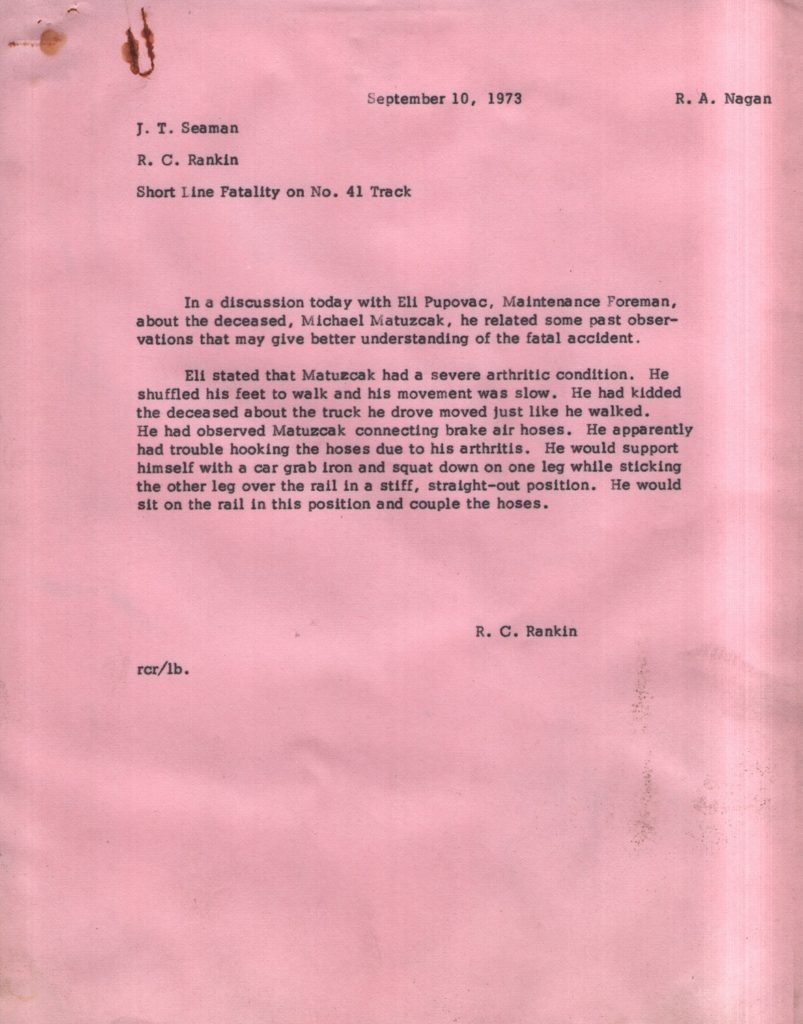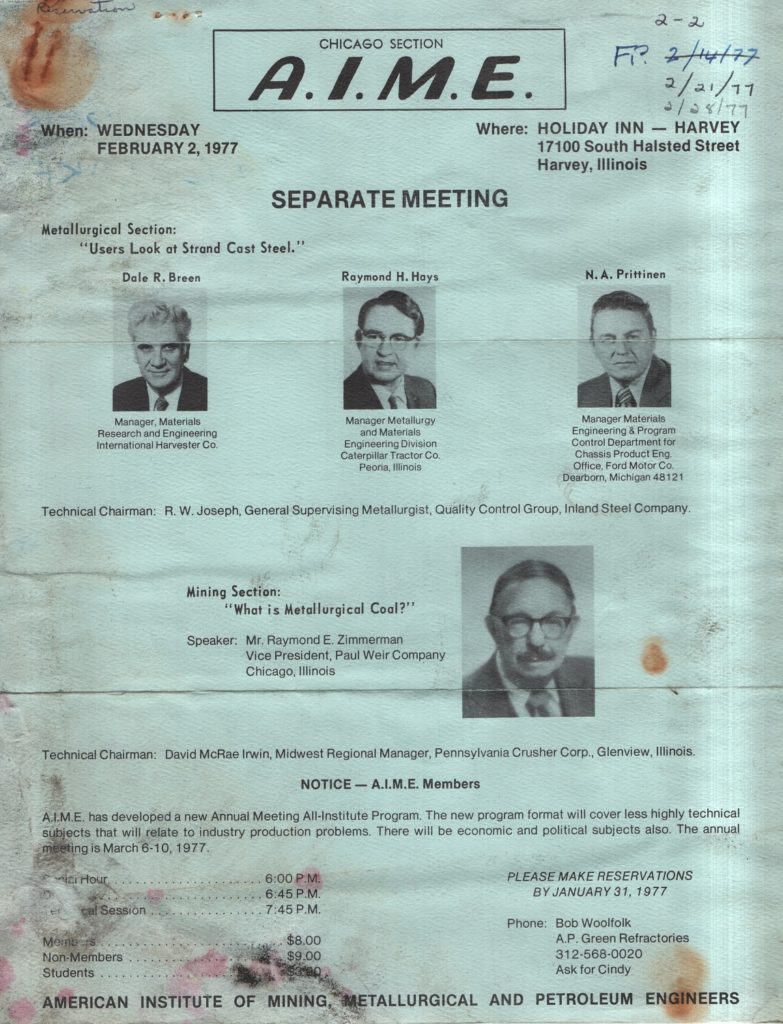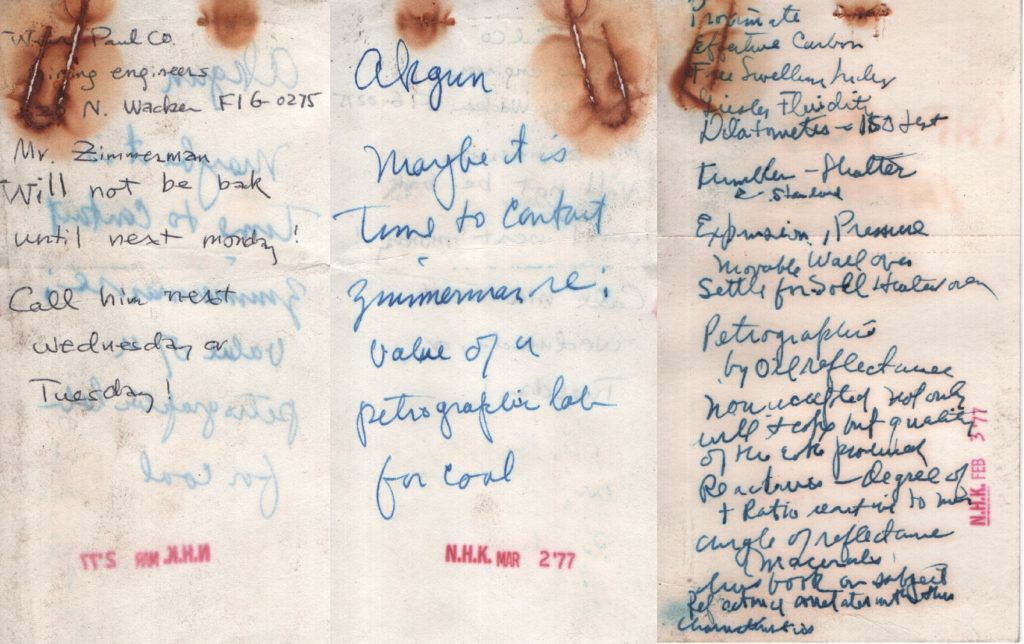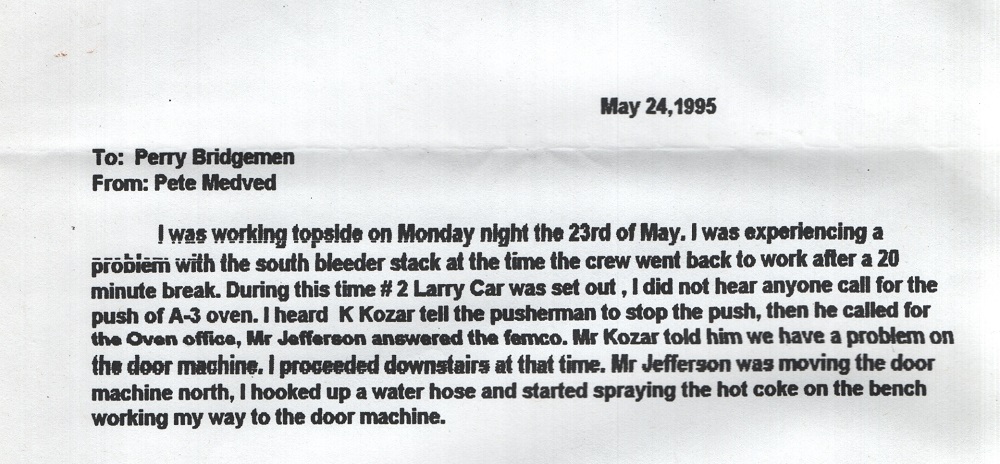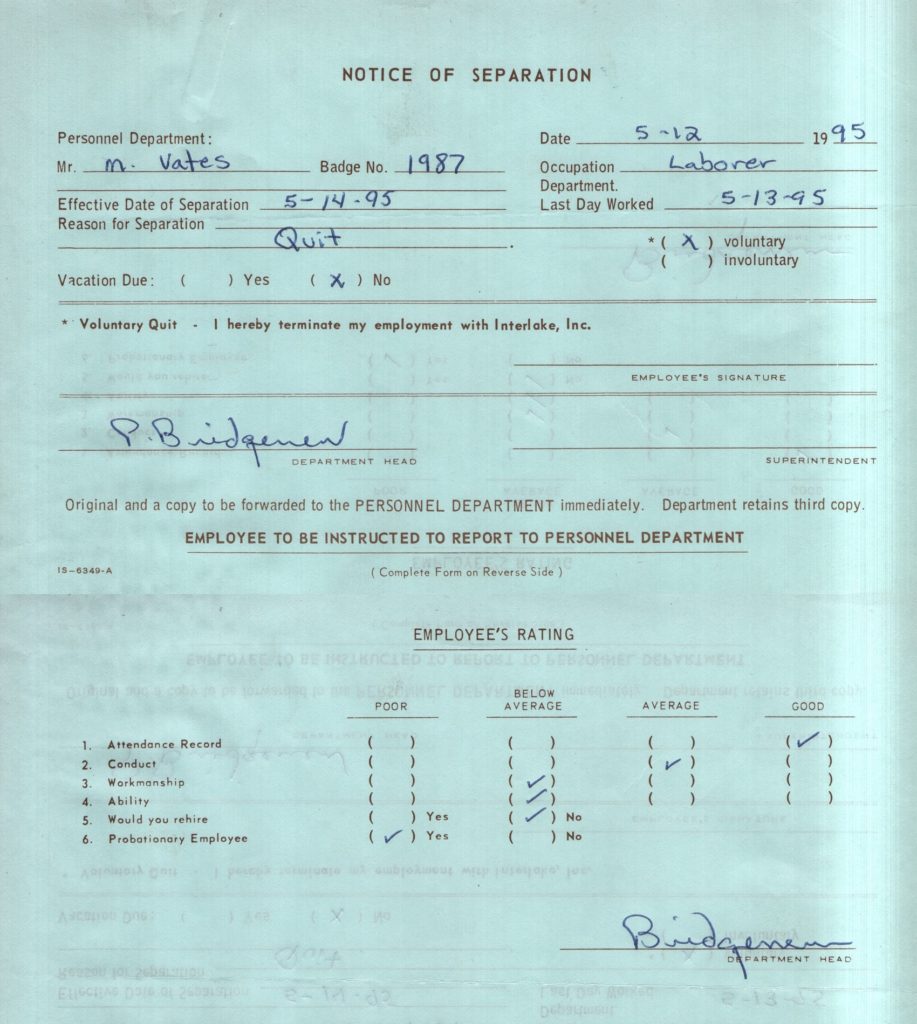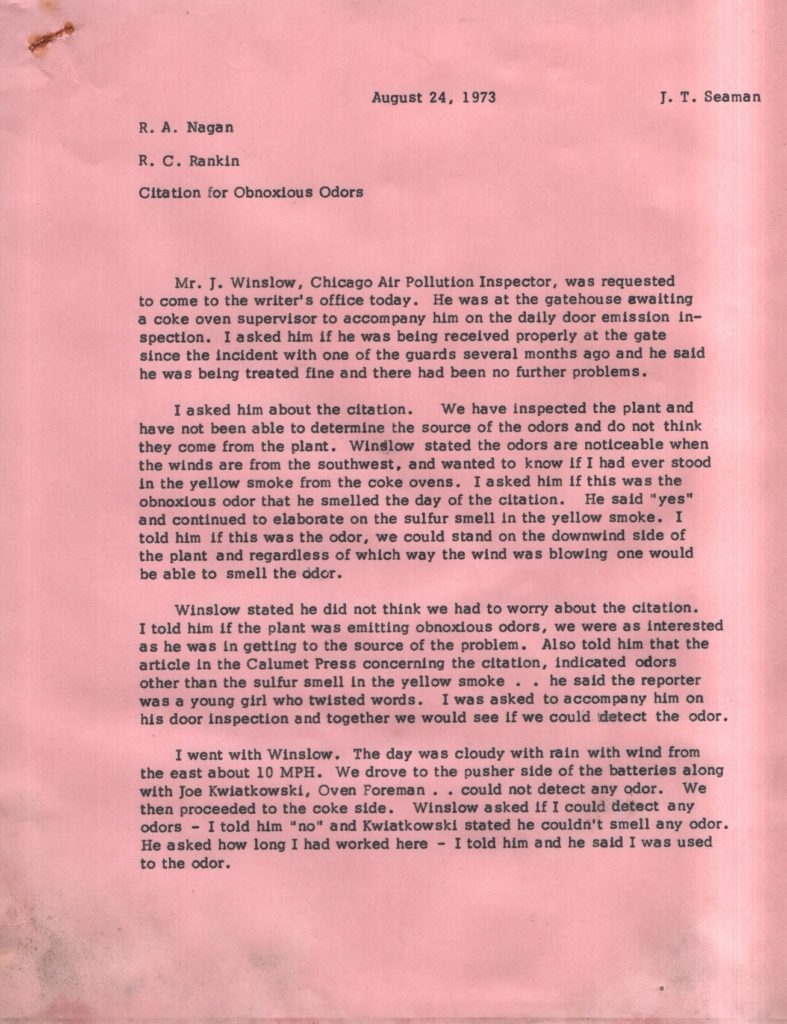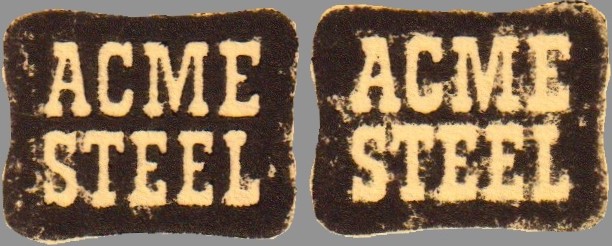Keeping the streak alive! So many consecutive Saturday’s this is a serious part time job!. Turns out the pay and benefits are pretty bad but there are a hell of a lot of perks. I’m allowed to come hang out whenever I want, I basically have the keys to the place. There are more documents and artifacts than I can even carry. And the colder the better so I don’t have to worry about any knuckleheads roaming around. Got pretty freaked out when I heard some coyotes howling. I was on the second floor of the gate house and I stepped closer to the window to hear it better. There are so many animal tracks in the winter it is terrifying. I literally went knee deep in the snow trying to walk from the main office to the BP office. It was another fun weekend and I pulled so many scores out, it took me over an hour just to inventory them and pull out the garbage.
- Documents
- BP alarm SOPs
- #1-17, dated 2000
- Found in BP office
- These were cemented inside a binder. I removed them and tossed the binder, I wasn’t sure if the pages would separate but after a few hours indoors they are coming apart perfectly. I believe this is the first document I have ever recovered from the BP office
- Ammonia Removal System Upgrade
- dated 1994-1995
- foud in BP office
- Four separate documents, includes memos and PR for over $2 million
- Coal Handling cost/process analysis
- dated 1968
- single memo, with 28 page report analyzing the cost to operate CCH dept and benchmarks required to improve upon
- Continuous Caster EPA construction permit
- Plastic spiral bound, includes introductory memo
- found in asst. division managers office
- In 1994, Acme built the largest (at the time) continous caster at the Riverdale mill. This increases production, which increases emissions. It also requires more steel – which requires more coke – which also creates more emissions. This ‘permit’ outlines the max limits for these emissions sources and details how they have been increased.
- Halcon Quench car memos
- found in asst. division managers office
- In 1973, Interlake purchased a new quench car from Halcon in Houston TX. Unlike a standard gondola style quench car, the Halcon controls emissions by doing some amount of quenching as the coke is being caught, which creates a vacuum (the car is partially hooded) and pulls emissions into the car where they are condensed in the recirculating water. A NEPIS report from 1974 mentions Interlake specifically (they may have had the only one at that time) and they mention a cost of $2 million.
- Five memos, one details a very awkward meeting from their AIST colleagues who came from around North America to see this stunning new quench car to disappointing results
- Asst. Division Manager expense reports and calendars
- dated 2000
- found in asst. division managers office
- “Damage Inspection of the Coke Gas Line and Holding Tank”
- 1976, 5 page report plus intro memo
- two pages are drawings (on Interlake graph paper) to demonstrate scale, the last page is some kind of Xerox of photos – very cool. Disappointing though that the whole report gives no explanation of how the damage occurred!
- Grievances
- I have found and posted grievances before – some were marginally entertaining. But these are specifically RESOLVED grievances. They weren’t just denied – they ended in the employee resigning or fired it seems. I glanced at a few and they were VERY entertaining and I can’t wait to read the rest
- CCH Supervisory Force Investigation
- This comprises a number of memos and reports in a tennis match like back and forth. It seems someone in a supervisor role in the department fired off a memo to the VP of the company, going right over the heads of the division managers who are then trying to play catch up and fight back against the accusations of poor management in the department. Very dramatic, historic and entertaining!
- COG main shutdown
- 1974, two memos, about 6 pages total on above topic
- COG detection system
- 1976, proposal for a system that cost $226K over 40 years ago! (edit: later found even more memos and documentation on this dating back to 1973)
- Capital/project expenditure proposals
- already scanned a load of these from different eras. These three are all from 1959 and specific to ovens
- Bleeder Stack Inspection
- 1977, nice report with an 18″ Wilputte (copied) drawing, plus more drawings on Interlake graph paper, plus (copied) photos on the last page!
- 36″ COG line inspection
- One page report! Plus a couple of memos (1977)
- Thermographic Survey
- Best I can tell, some type of primitive heat signature camera was used from a helicopter. This report includes a simple sketch of a section of the property and three pages of actual photos tapes onto the pages with identifying notes. The photos were taken with an ‘AGA Thermovision’. Specifically, they were using this survey to calculate the amount of carbon deposits on sections of the COG main (‘20% buildup’, ‘40% buildup’, etc). Looks like the plant did these regularly, semi-annually even.
- I hesitate to even touch on this as it is so much of a breakthrough. I located a number of documents dating 2006-2008 in the gatehouse. Of course the plant closed in 2001, so how is this possible? These all seems to point to 3rd parties taking control of the abandoned plant while hundreds of dump trucks came in and out and crews worked at scrapping anything metallic, and removing asbestos (or other toxic substances). I have been in the gate house before and stupidly overlooked these important documents. All of this will be discussed in a separate post.
- BP alarm SOPs
- Resources
- “What is Coking Coal?” (alternate title “What is Metallurgical Coal?”)Found in plant petrographer (Dr. Lin) office
- dated 1977
- ~30 page presentation with figures/graphs/etc. This presentation was given at the Aime regional (Chicago) meeting on Feb 2 1977 by Raymond Zimmerman.
- This will be placed in the ‘Resources’ section of the site but it does have an Interlake connection. Found nearby was a flyer/program for the meeting which has photos for the speakers. Stapled to it is a registration card for the meeting marked with the name of the attendee (and ‘Interlake’ for ‘company’). The name written is ‘Keyser’. An N.H. Keyser has come up before in documents found from the era, specifically in the BP field, I believe he worked in Riverdale (not at the coke plant) in more of a corporate role.. The backside of the registration card is covered with notes taken from Mr. Zimmerman’s talk and another note is paperclipped onto it. The backside reads “Maybe it is time to contact Zimmerman re: value of a petrographic lab for coal”. Ironic – as that is exactly where I have found this document, which must have been archived for years by Dr. Lin. I found this profile online – at the time of this presentation Mr. Zimmerman had almost 40 years experience in the industry! Amazing history!
- “Aspects and Prospects – Cresols and Cresylic Acids”
- 1957, James H. Carpenter, US Dept of Commerce
- “What is Coking Coal?” (alternate title “What is Metallurgical Coal?”)Found in plant petrographer (Dr. Lin) office
- Artifacts
- Grabbed some ‘Ammonia’ pipe labels. Four of them on an uncut sheet and in great shape. I’d probably leave them behind except I found them in the BP office where they are especially relevant.
- As I was going to leave I decided to roam around a bit in the gate house, which I haven’t done in a while. Upstairs I found a partially broken door name plate ‘CP TRAINER’. I assume the CP stands for ‘coke plant’ which is almost funny how redundant it is. I have to think ‘TRAINER’ would be sufficient, but then if I found it I wouldn’t want it!
- The door name plane made me think of all the doors I come across, all over the property that are torn from their hinges and laying on the ground. Of course I haven’t checked any of them but maybe they all have name plates! The door to the second to last office (going south) on the second floor of the gate house was laying in the middle of the room. It was quite heavy but I was able to lift it up to check the bottom when I saw someone put it there to cover a huge hole in the floor! It had no name plate and I quickly put it back where I found it. So I went back downstairs and what do I see? Another door laying on the ground, partially covered with debris. I have stepped over it before and never noticed but I noticed something. I cleared the debris and saw that the door had a big sticker (about 22″ x 7″) that says “COOPERATIVE PARTNERSHIP – ACME STEEL – LOCAL 1657”. Green text on a white background with a green border. But there is no way to get a sticker off a door, especially this age. But this door (unlike many others) was covered in a veneer, and that veneer is totally degrading and pulling away from the door itself. I was able to cut the veneer (with the sticker attached) from the door fairly easily with my knife. The veneer is cracking badly so at the moment it is very fragile. I have a few ideas I am kicking around to get this into a displayable state, and that will be covered in another post.
- I found an unused Acme Steel envelope a few weeks back and shared a photo of that. Last week I found at least 10 more but did not take them. I did however stash them in a safe place and I did grab those. A number of them are bent/creased so I currently have them under the weight of some other coke plant documentation in the standing desk I restored. How fitting!

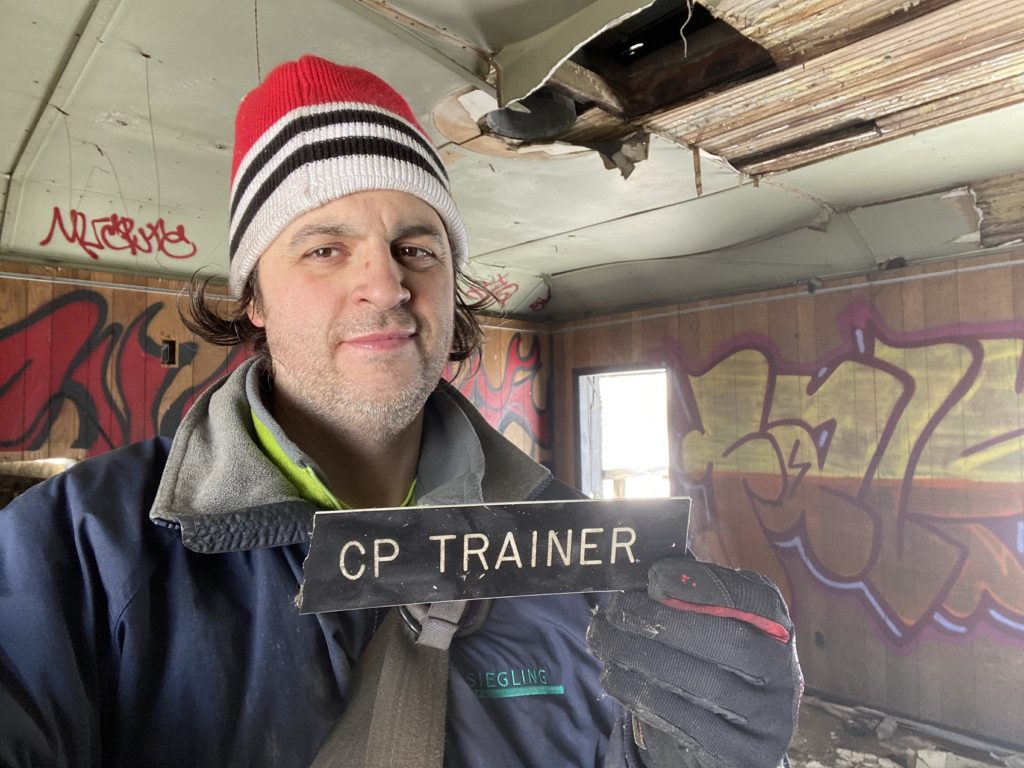
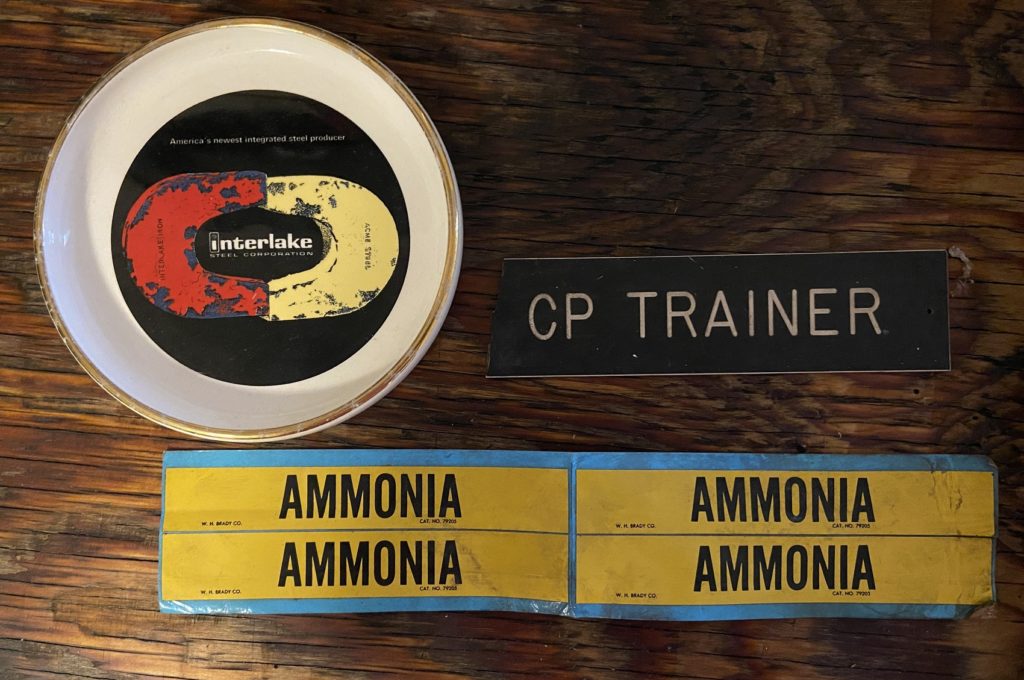

As always, I have a handful of documents that are worth sharing but don’t exactly fit into the Document Archive. Some are a bit frivolous for my uses but all still have good historical importance. Here are the weekend’s findings.
